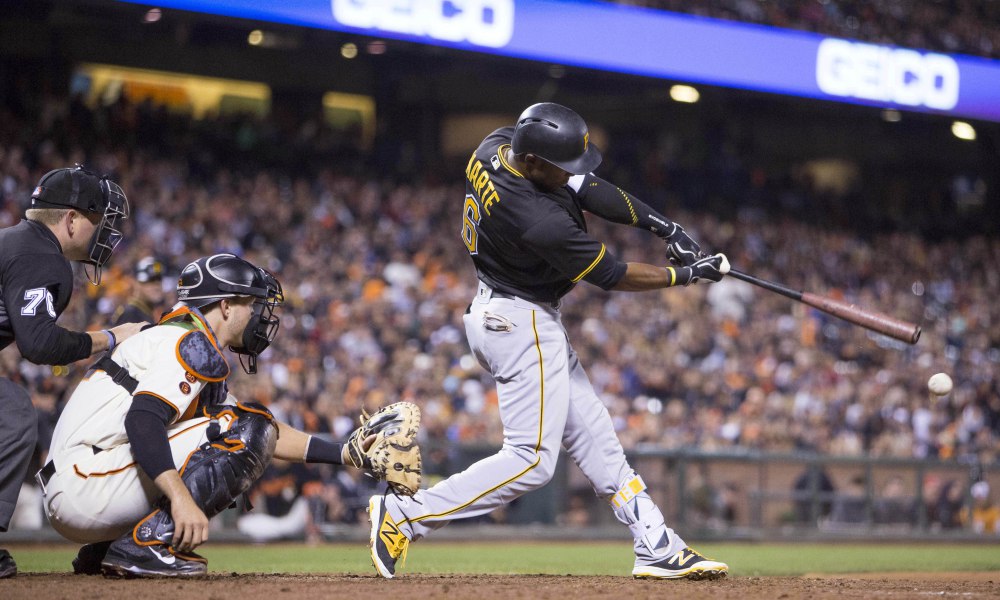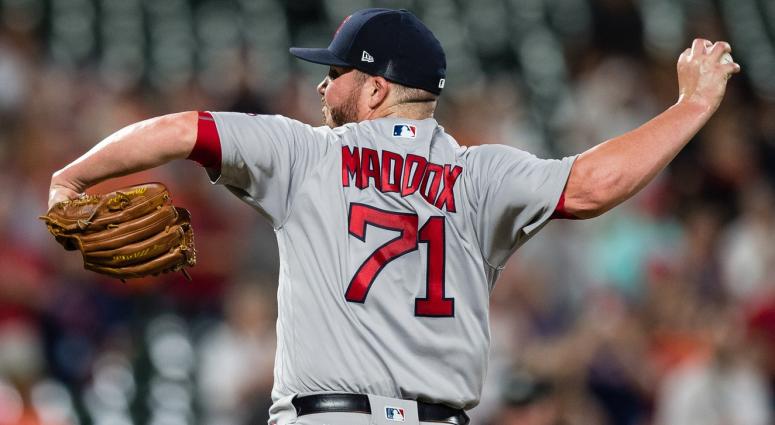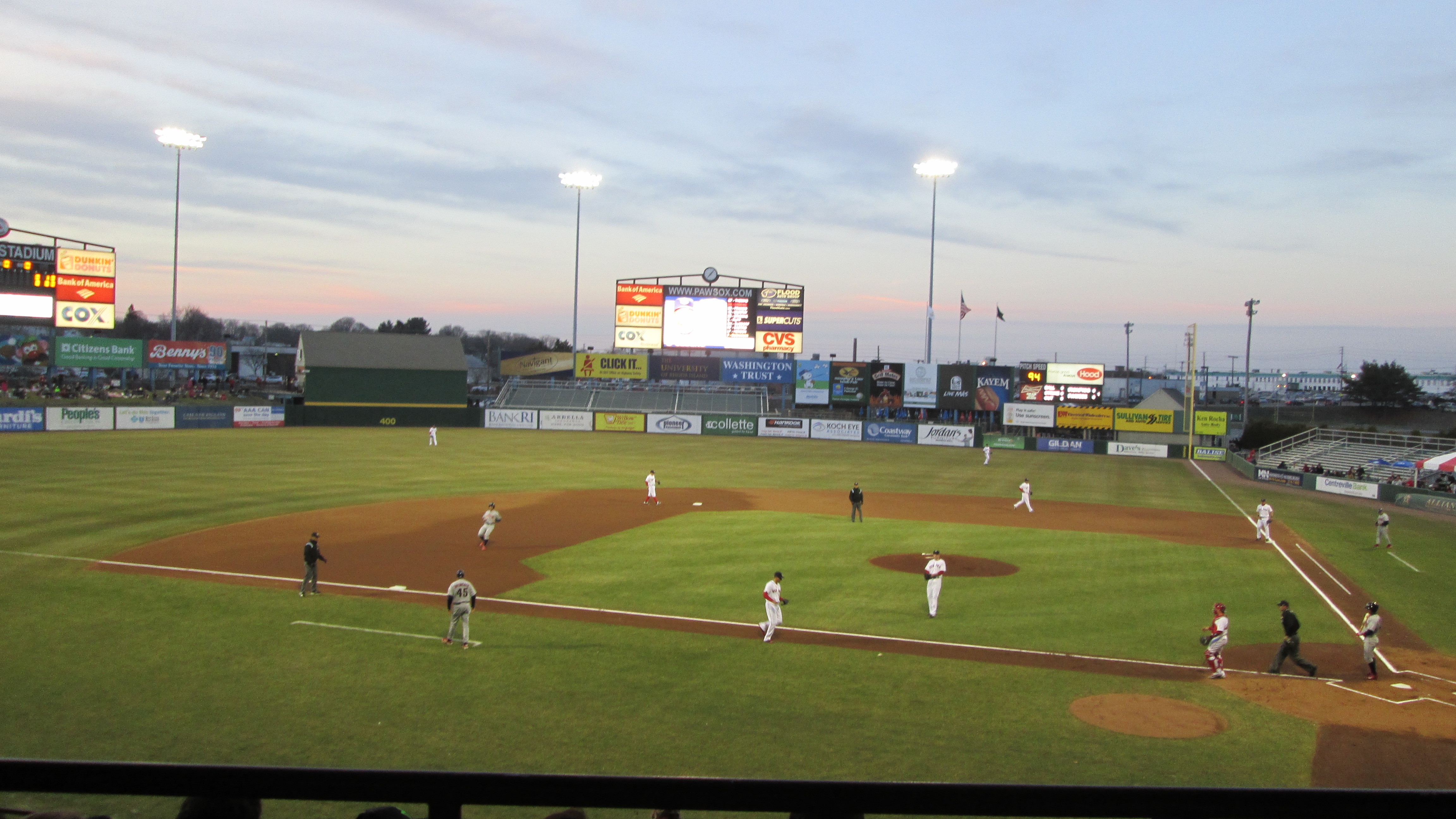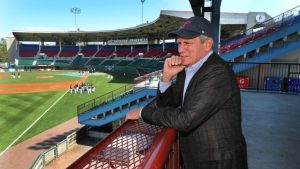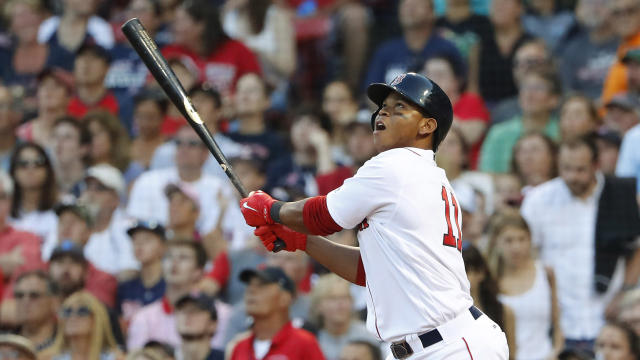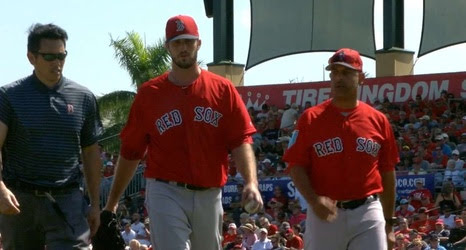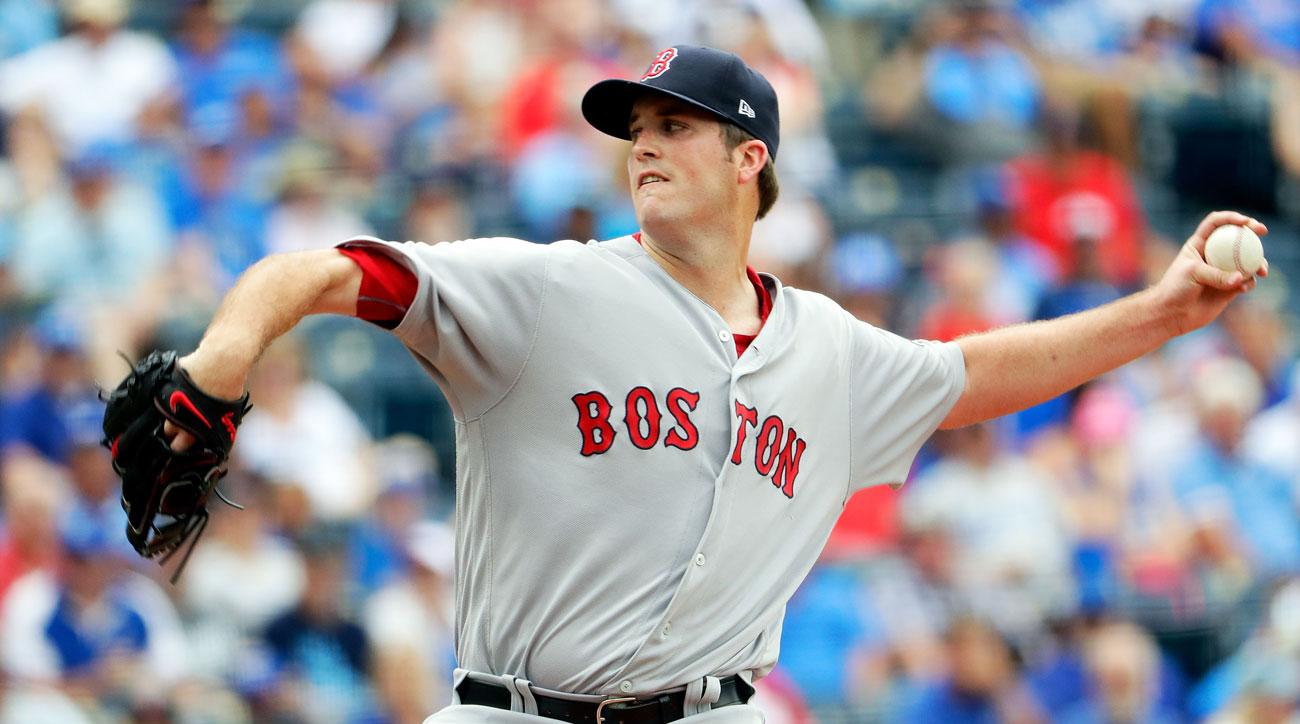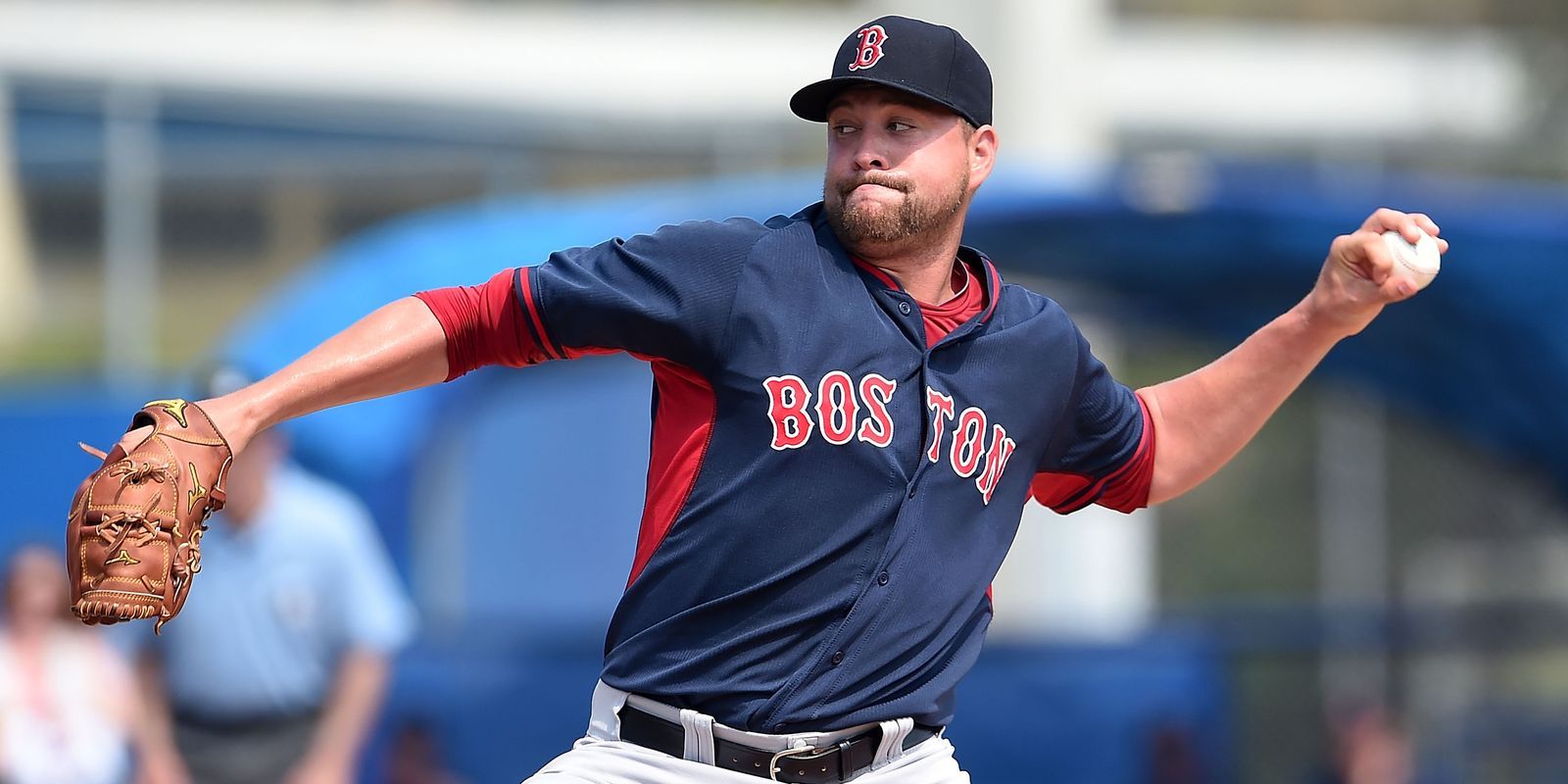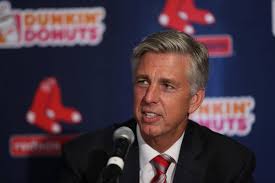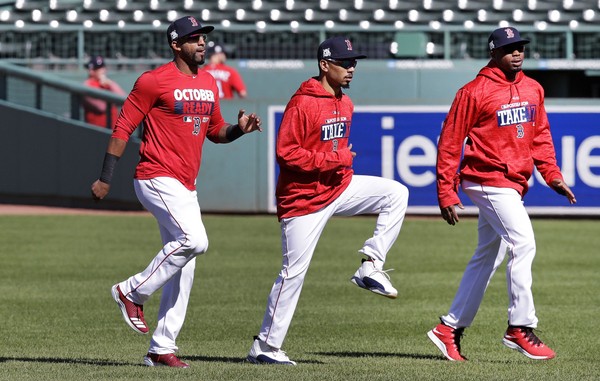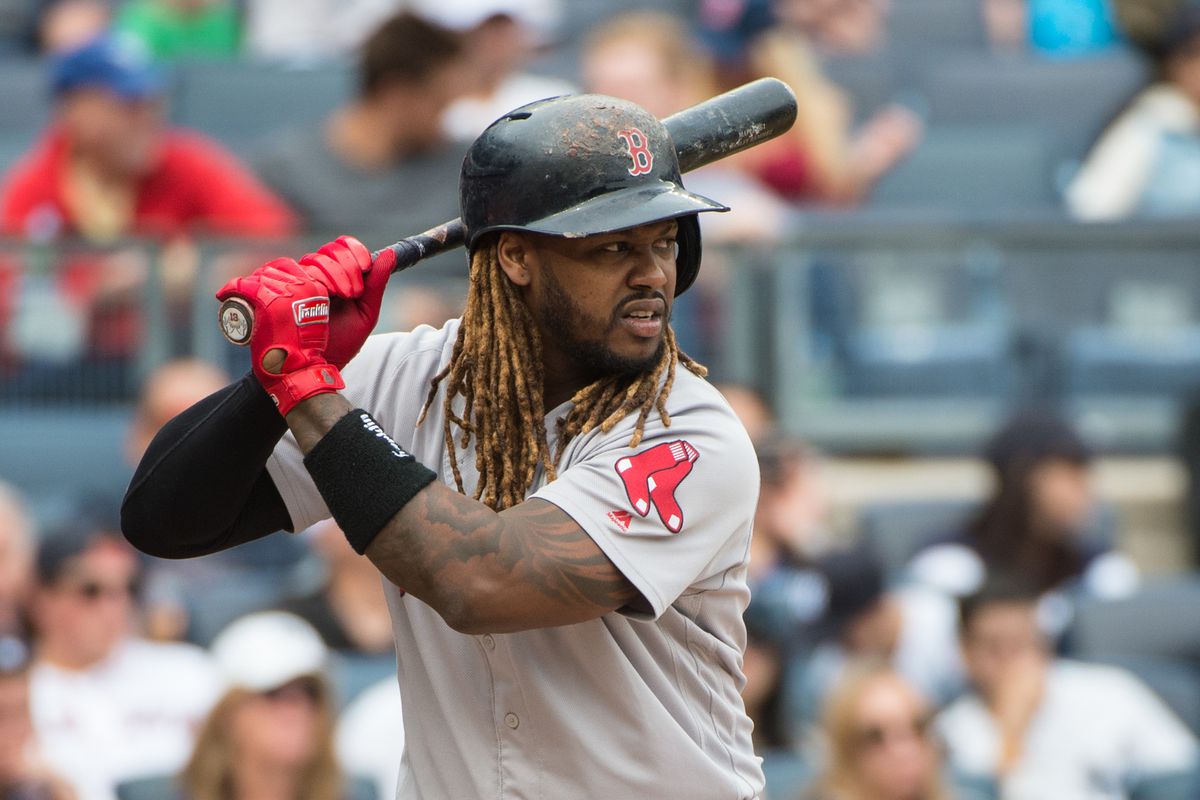The Boston Red Sox won 93 games and a division title last season, and they’ve only gotten better. The offense underachieved last season, and just about every player will probably increase their production in 2018. They’ve replaced John Farrell with a younger manager who better fits the team in Alex Cora. This alone guaranteed the Red Sox would be a good team in 2018. After bringing on JD Martinez, the 2018 Boston Red Sox have no ceiling
The Missing Power

JD Martinez is finally a Red Sox!
Image Credit: Yahoo Sports
The Boston Red Sox put up the sixth most runs in the American League last season, but the offense as a whole didn’t feel that great. This was due to the fact the Red Sox finished dead last in the AL in home runs. They could mash singles and doubles, but they lacked a guy that could change a games outcome with just a swing of a bat.
After a long and tedious offseason, that need has finally been met. The Red Sox signed the best power hitter on the market, JD Martinez, to a very reasonable five-year deal for $110 million. It’s no secret that the Red Sox wanted him from the start of free agency, but they played their cards right. Instead of overpaying, they got their top free agent on a deal that won’t burden the team years down the line.
And boy does Martinez fill a need. Martinez has hit 105 home runs in the past three seasons. By comparison, Mookie Betts is the next closest on the Red Sox with 73 homers. Martinez is more than a one-trick pony, as his average slash line over the past three seasons has been .297/.364/.586. He’s not just a great power hitter, he’s a great all-around hitter. Players capable of hitting for power and average are becoming increasingly hard to find, and the Sox found one.
Internal Offensive Improvements
As mentioned earlier, the Red Sox offense as a whole regressed in 2017. Just about everyone underperformed from their previous seasons. The Red Sox young core of Mookie Betts, Xander Bogaerts, and Jackie Bradley Jr. are projected by just about every source to improve on their 2017 season. Hanley Ramirez has changed his offseason workout regimen, and there’s plenty of reason to believe he’ll have a great bounce back year.
While the established players should bounce back, two very young players should continue to improve. Left fielder Andrew Benintendi and third baseman Rafael Devers are entering their second full year in the pros, and should play huge roles in the team’s success.
Benintendi had a good 2017, finishing second in the rookie of the year voting to Yankees slugger Aaron Judge. However, his season was streaky and he went through the normal highs and lows of being a rookie. Those lows shouldn’t be as low or last as long with a full year under his belt. Outside of Mookie, Benintendi could be the best all-around player on the Red Sox. He could even make an MVP push if everything breaks right.
The Devers Factor
Devers could make an even bigger impact. The third baseman was promoted to the majors at age 20 after just one week in AAA Pawtucket simply because the Red Sox third base situation was that bad. Most any other player would struggle given such a drastic rise in competition, but Devers thrived. His major league career began with a home run, and he never slowed as the season went on.
Devers became arguably the best power bat on the 2017 Red Sox. In just 58 games, the Red Sox rookie hit 10 home runs with a .284/.338/.442 slash line. He had a knack for big moment plays, most notably his homer against Yankees closer Aroldis Chapman and his inside the park homer against the Houston Astros in the playoffs. This is great production for any rookie, nevermind a 20-year old who got called up primarily out of desperation.
His fielding needs some work, but that should improve with time. He’ll never win a gold glove, but he should figure out how to be a major league fielder. Obviously, major league players hit the ball a lot harder than the AA guys he faced the first half of the season. He made a few great defensive plays his rookie year, and his mechanics should improve with time.
Even if you don’t believe Devers can match his rookie production, there’s no way he can be worse than what the Red Sox sent out in 2017. In his half season in the pros, Devers compiled a respectable 0.9 WAR. By comparison, the primary third base options in the beginning of that season (Tsu-Wei Lin, Devin Marrero, Pablo Sandoval, Brock Holt) put up a combined -0.8 WAR. By default, Devers at third will be better than whatever the alternative is.
The Starting Pitching

As great as the lineup is, the rotation is just as good
Image credit: Boston Herald
While the offense struggled in 2017, the starting pitching was mostly dominant, and most of those pieces are returning healthier than ever. Chris Sale and a now-healthy David Price are arguably the best one-two combination in baseball. Sale is a top-five pitcher, and should be in the Cy Young running again. Price isn’t what he was, but he’s still a great pitcher who would be the ace on most teams. His elbow is a concern, but as long as he’s healthy he should remain one of the best #2 starters in baseball.
The crew behind that duo is pretty impressive. Drew Pomeranz probably won’t be able to match his 2017 production, but he’s still a safe bet to finish the season with a 3.50-3.70 ERA and get six to seven innings a start. That’s the recipe for a good third starter. Contrarily, Rick Porcello will almost certainly not be as bad in 2018 as he was in 2017. He probably won’t win the Cy Young again, but he doesn’t need to. Expect Porcello to finish the season with an ERA around 4 and eat at least six innings every time he gets the ball.
The biggest wild card here is what Eduardo Rodriguez can do. He’s flashed his huge ceiling ever since being called up in 2015, but injuries and inconsistency have plagued the pitcher. He will miss part of the season with a knee injury, but expect big things when he comes back. A new manager might just be the change E-Rod needs to finally break out and become the pitcher he’s capable of. If he can do that, he immediately becomes the #3 guy in the rotation.
The Depth Starters
The Red Sox have their top five set in stone, but all five won’t be healthy for all 162 games. Fortunately, the Red Sox are pretty well set with their backup plans. Knuckleballer Steven Wright has performed well in the past as a starter, and will likely take E-Rod’s spot in the rotation while he gets healthy. It looks as though Wright has finally put his shoulder injury behind him, which bodes well for the Red Sox. The last time Wright was healthy was in the first half of 2016, when he earned a spot at the All-Star game.
The Red Sox are pretty well set even if calamity strikes and they need two spot starters at once. Both Hector Velasquez and Brian Johnson have shown they’re capable of performing adequately when their number is called. While neither player should be used as anything other than a last resort, they’re both capable of starting a major league game and keeping the Sox in it.
The Bullpen
This is arguably the weakest part of the Red Sox roster, which says a lot about how strong every other part of the Red Sox is. The Sox still have a top-five closer in Craig Kimbrel, and it sounds like Cora is willing to use him in more than just save situations. Kimbrel has been one of the best relievers in baseball for years, and that shouldn’t change now.
Addison Reed left in the offseason, but the duo of Carson Smith and Tyler Thornberg will fill his role. Smith looked as advertised in limited outings last season, and Thornberg had a great 2016 with the Milwaukee Brewers before missing all of 2017. All three aforementioned arms can blow up the radar gun and could prove to be a dominant grouping in the final three innings of the game.
The guys behind the top three aren’t bad either. Joe Kelly, Brandon Workman, and Matt Barnes all have their flaws and limitations, but each has shown flashes of brilliance. Each can come into a game early and keep the now-explosive Red Sox offense in it. Of this group, Workman has the highest upside.
Injuries robbed Workman of his 2015 and 2016 seasons after a failed attempt at being a starter in 2014. Workman faltered down the stretch, posting a 6.10 ERA in September and October. Before that, though, Workman put up a very impressive 2.15 ERA in 29.1 innings of relief. Workman’s late season skid was probably due to fatigue; he hadn’t pitched in the majors since 2014. If Workman can come back and last a full season, the Red Sox have yet another dangerous arm.
The Competition
The Red Sox are a very good team and could very easily break 100 wins if everything goes their way. However, don’t plan the World Series parade yet. The AL is stacked with high talent teams, and 2018 should be a great season for baseball.
The reigning champion Houston Astros are the team to beat, and they’re not going anywhere. Superstars Jose Altuve and Carlos Correa will wreak havoc on the league for the next decade. Their championship wasn’t a fluke, and it wouldn’t surprise anyone if the Astros went back to back.
The New York Yankees have an impressive young core of sluggers, and just added NL MVP Giancarlo Stanton. The Cleveland Indians remain an incredibly difficult team to beat as long as it’s not an elimination game. Just like 2017, these three teams and the Red Sox should make up the top four American League teams.
The Red Sox are now on that level. Sure, they won the division last season, but everyone knew what was awaiting them in the playoffs. This year, a division title isn’t the best case scenario. With a new power hitter, offensive improvements from within, and a great group of pitchers, these Red Sox are ready to challenge for a World Series title.
Cover image courtesy of MassLive.com.
